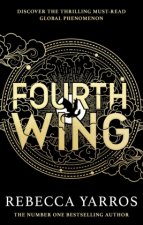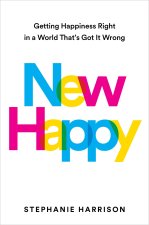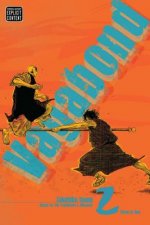
Kód: 32901481
Ballet in the Cold War
Autor Searcy, Anne (Assistant Professor of Music History, Assistant Professor of Music History, University of Washington)
In 1959, the Bolshoi Ballet arrived in New York for its first ever performances in the United States. The tour was part of the Soviet-American cultural exchange, arranged by the governments of the US and USSR as part of their Cold ... celý popis
- Jazyk:
 Angličtina
Angličtina - Väzba: Pevná
- Počet strán: 190
Nakladateľ: Oxford University Press Inc, 2020
- Viac informácií o knihe

Mohlo by sa vám tiež páčiť
-

Husband, Wife, Australian Terrier: For Australian Terrier Dog Fans
7.21 € -2 % -

No-Stress Potty Training Solution
14.12 € -12 % -

scapes to behold - a photographic anthology
49.11 € -19 % -

BABADADA black-and-white, Greek (in greek script) - Kurdi, visual dictionary (in greek script) - ferhenga ditbari
11.07 € -2 % -

Dreieck der Verleugnung
27.95 € -2 % -

BABADADA black-and-white, Vlaams - Serbian (in cyrillic script), Beeldwoordenboek - visual dictionary (in cyrillic script)
11.07 € -2 % -

Cofidis 20 ans de passion
25.72 €
Darujte túto knihu ešte dnes
- Objednajte knihu a vyberte Zaslať ako darček.
- Obratom obdržíte darovací poukaz na knihu, ktorý môžete ihneď odovzdať obdarovanému.
- Knihu zašleme na adresu obdarovaného, o nič sa nestaráte.
Viac informácií o knihe Ballet in the Cold War
Nákupom získate 143 bodov
 Anotácia knihy
Anotácia knihy
In 1959, the Bolshoi Ballet arrived in New York for its first ever performances in the United States. The tour was part of the Soviet-American cultural exchange, arranged by the governments of the US and USSR as part of their Cold War strategies. This book explores the first tours of the exchange, by the Bolshoi in 1959 and 1962, by American Ballet Theatre in 1960, and by New York City Ballet in 1962. The tours opened up space for genuine appreciation of foreign ballet. American fans lined up overnight to buy tickets to the Bolshoi, and Soviet audiences packed massive theaters to see American companies. Political leaders, including Khrushchev and Kennedy, met with the dancers. The audience reaction, screaming and crying, was overwhelming. But the tours also began a series of deep misunderstandings. American and Soviet audiences did not view ballet in the same way. Each group experienced the other's ballet through the lens of their own aesthetics. Americans loved Soviet dancers but believed that Soviet ballets were old-fashioned and vulgar. Soviet audiences and critics likewise appreciated American technique and innovation but saw American choreography as empty and dry. Drawing on both Russian- and English-language archival sources, this book demonstrates that the separation between Soviet and American ballet lies less in how the ballets look and sound, and more in the ways that Soviet and American viewers were trained to see and hear. It suggests new ways to understand both Cold War cultural diplomacy and twentieth-century ballet.
 Parametre knihy
Parametre knihy
57.55 €
- Celý názov: Ballet in the Cold War
- Podnázov: A Soviet-American Exchange
- Autor: Searcy, Anne (Assistant Professor of Music History, Assistant Professor of Music History, University of Washington)
- Jazyk:
 Angličtina
Angličtina - Väzba: Pevná
- Počet strán: 190
- EAN: 9780190945107
- ISBN: 0190945109
- ID: 32901481
- Nakladateľ: Oxford University Press Inc
- Hmotnosť: 446 g
- Rozmery: 243 × 163 × 22 mm
- Dátum vydania: 13. November 2020
Obľúbené z iného súdka
-

Berserk Deluxe Volume 1
48.50 € -28 % -

Haunting Adeline
30.60 € -

Berserk Deluxe Volume 2
51.95 € -

Cry Baby Coloring Book
9.75 € -13 % -

Berserk Deluxe Volume 3
48.60 € -4 % -

The Official Stardew Valley Cookbook
23.58 € -18 % -

Hunting Adeline
31.61 € -

Powerless
11.89 € -8 % -

Atomic Habits
16.36 € -29 % -

Harry Potter and the Prisoner of Azkaban (Minalima Edition)
35.17 € -14 % -

Chainsaw Man, Vol. 15
10.36 € -23 % -

Berserk Deluxe Volume 4
46.36 € -8 % -

White Nights
3.55 € -

House of Leaves
23.07 € -23 % -

Gravity Falls Journal 3
18.29 € -14 % -

JUJUTSU KAISEN V22
10.67 € -18 % -

Dungeons & Dragons Essentials Kit (D&d Boxed Set)
30.19 € -

Iron Flame
16.16 € -25 % -

No Longer Human
13.41 € -17 % -

A Little Life
17.38 € -

Surrounded by Idiots
10.67 € -11 % -

Twisted Love
9.75 € -18 % -

Berserk Deluxe Volume 5
50.22 € -1 % -

Fourth Wing
10.16 € -15 % -

Don't Believe Everything You Think
13.21 € -18 % -

Twisted Lies
9.75 € -18 % -

BALLAD OF SWORD & WINE QIANG JIN JIU V01
16.56 € -21 % -

Bungo Stray Dogs, Vol. 8 (light novel)
16.46 € -

Twisted Games
9.75 € -24 % -

The 48 Laws of Power
24.40 € -10 % -

Court of Thorns and Roses Paperback Box Set (5 books)
49.82 € -21 % -

Berserk Deluxe Volume 6
50.83 € -

Court of Thorns and Roses
9.24 € -22 % -

Reckless
11.79 € -18 % -

Heaven Official's Blessing: Tian Guan Ci Fu (Novel) Vol. 1
17.99 € -15 % -

The Creative Act
23.89 € -13 % -

New Happy
17.28 € -39 % -

Dune Messiah
8.94 € -21 % -

Icebreaker
9.14 € -23 % -

Court of Mist and Fury
9.34 € -19 % -

Heaven Official's Blessing: Tian Guan Ci Fu Vol. 4
18.60 € -12 % -

Twisted Hate
10.16 € -15 % -

Harry Potter and the Chamber of Secrets: MinaLima Edition
29.89 € -17 % -

The Laws of Human Nature
15.95 € -5 % -

Vagabond (VIZBIG Edition), Vol. 2
26.23 € -7 % -

Berserk Deluxe Volume 7
47.78 € -5 % -

Heaven Official's Blessing: Tian Guan Ci Fu (Novel) Vol. 2
18.80 € -11 % -

CHAINSAW MAN V14
11.18 € -

King of Sloth
10.67 € -11 %
Osobný odber Bratislava a 2642 dalších
Copyright ©2008-24 najlacnejsie-knihy.sk Všetky práva vyhradenéSúkromieCookies



 21 miliónov titulov
21 miliónov titulov Vrátenie do mesiaca
Vrátenie do mesiaca 02/210 210 99 (8-15.30h)
02/210 210 99 (8-15.30h)